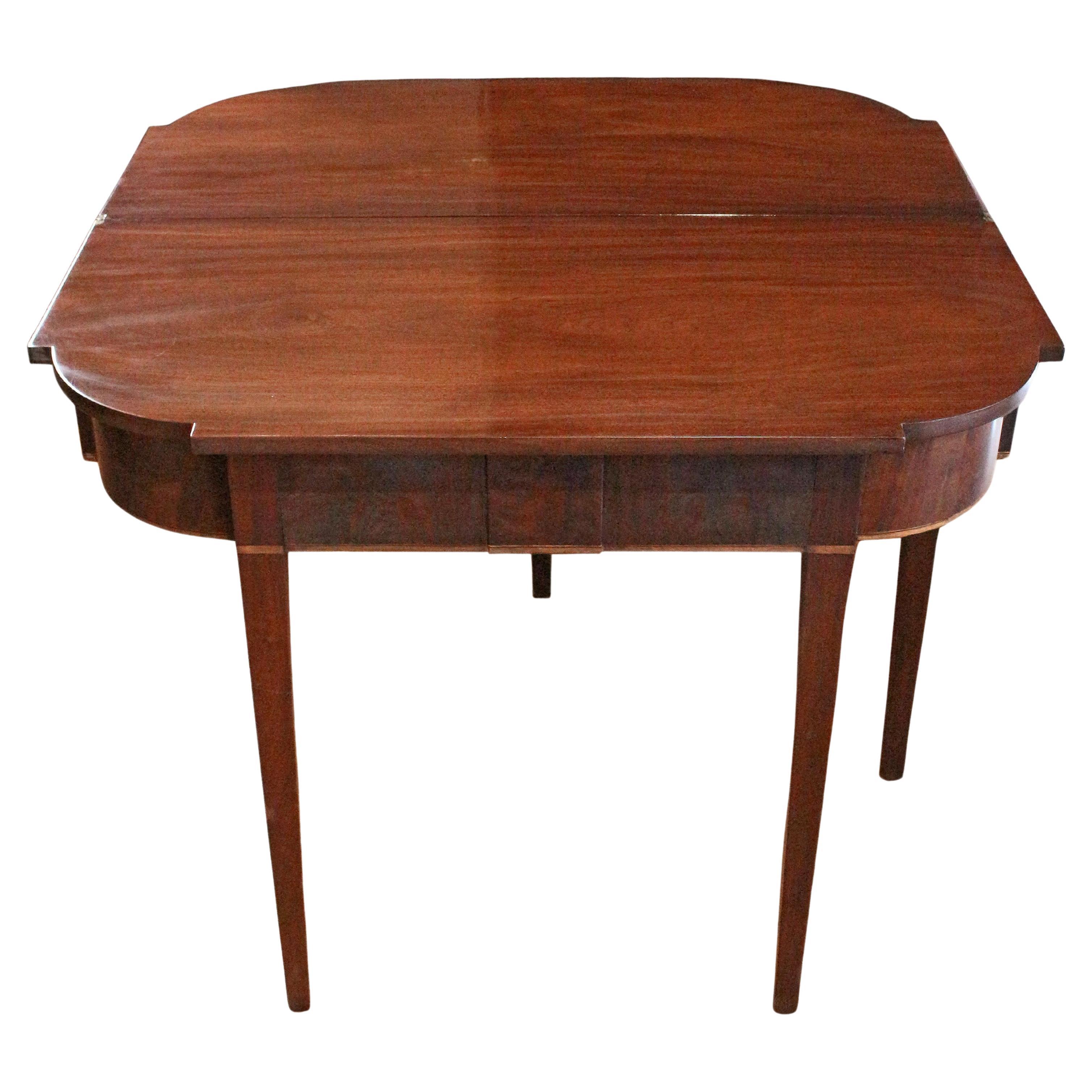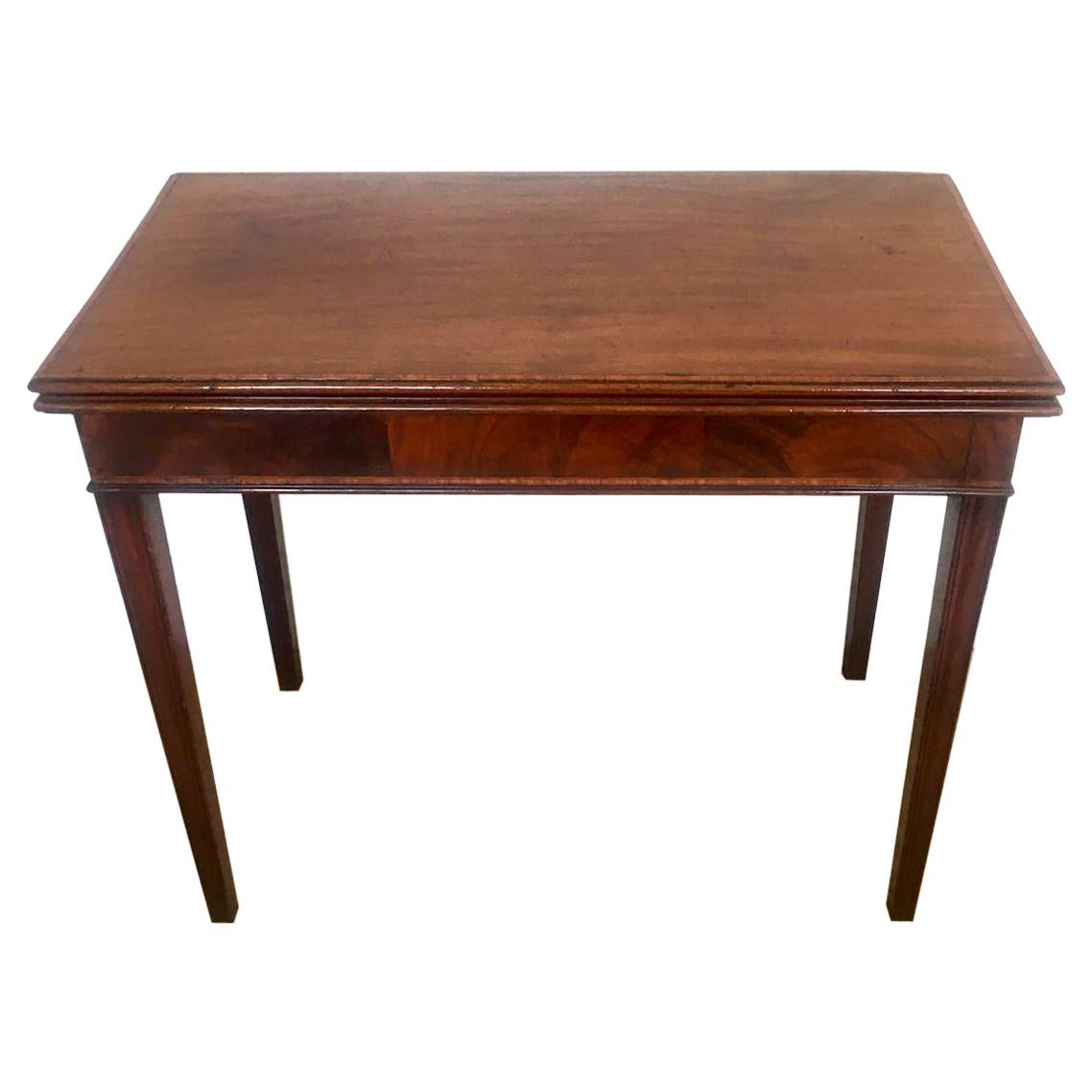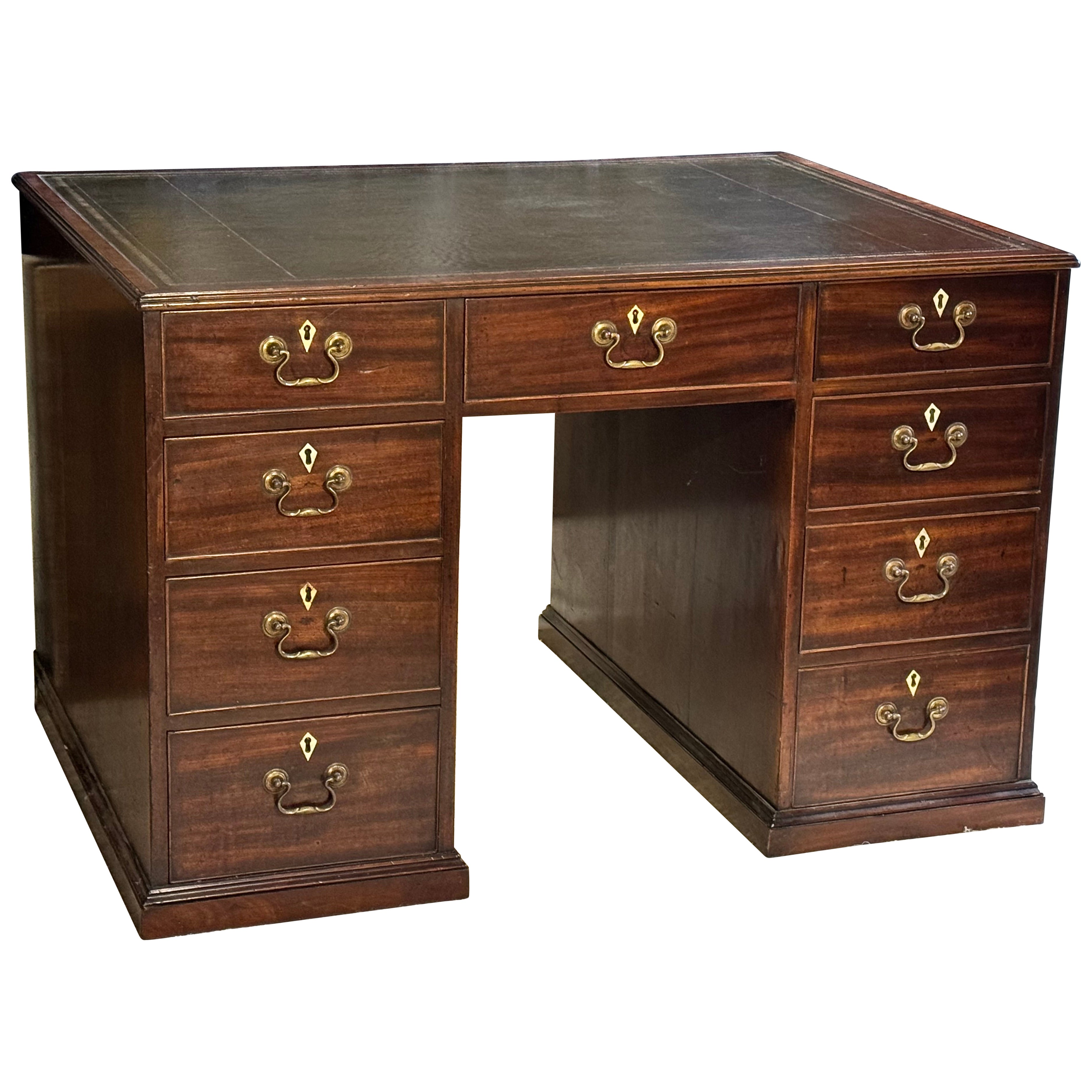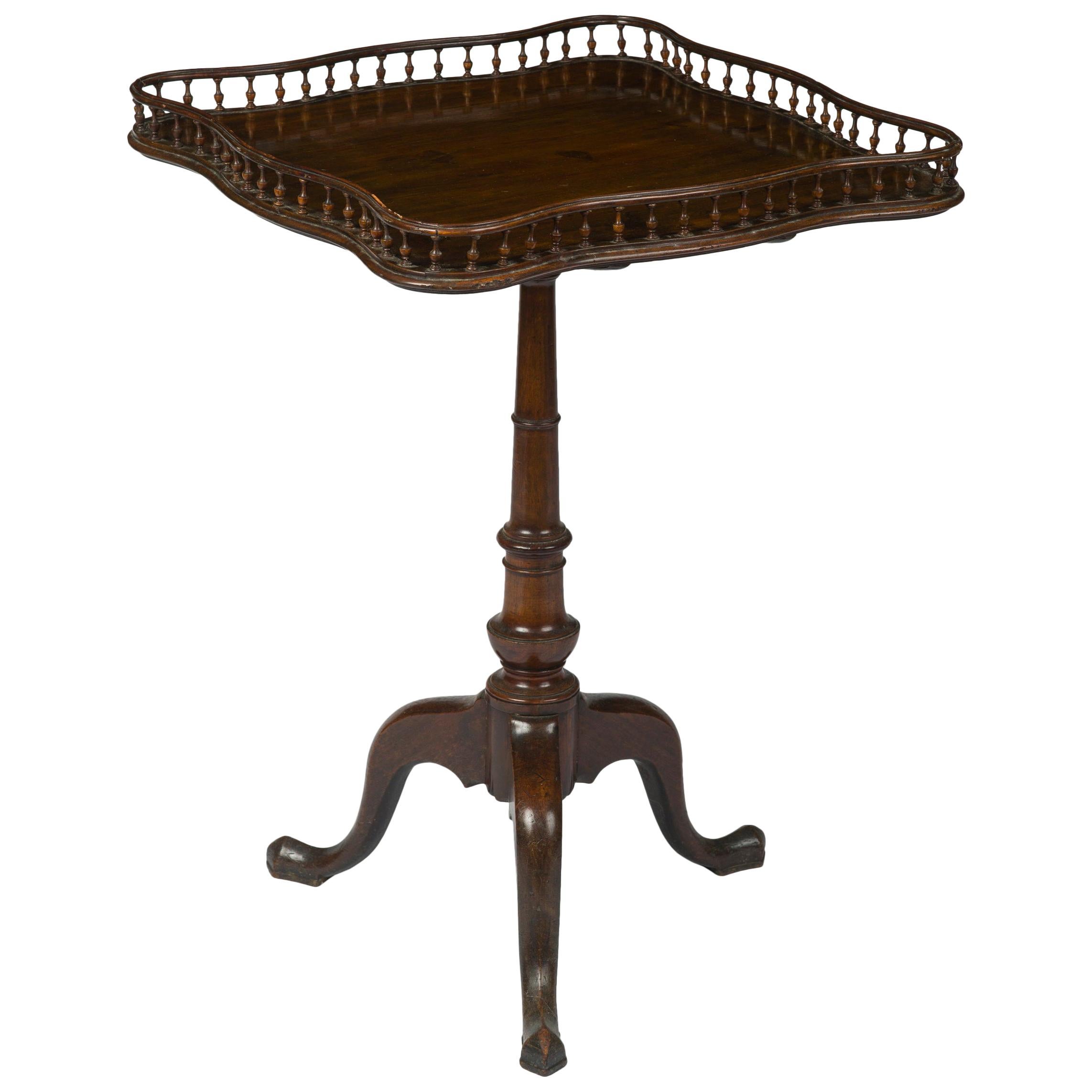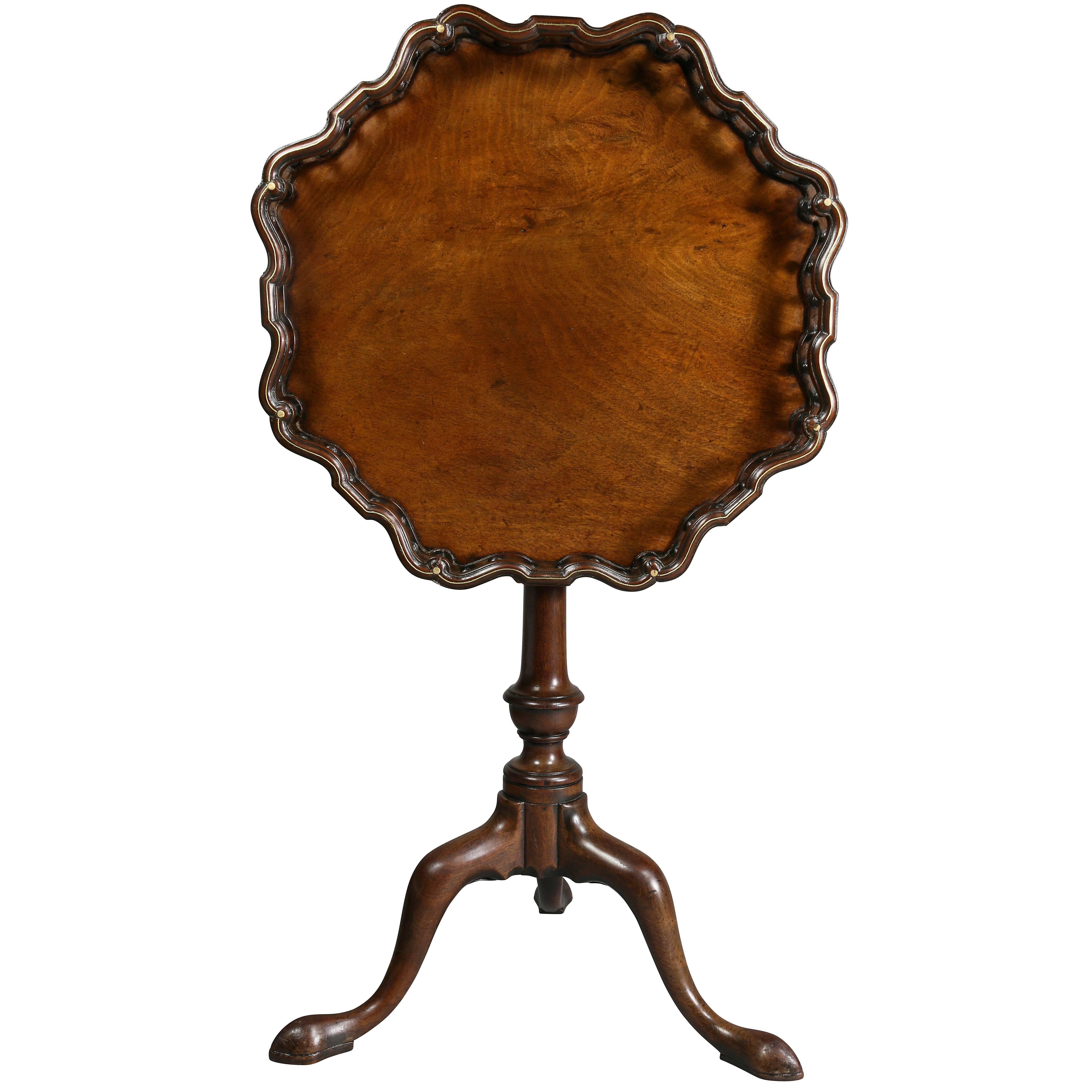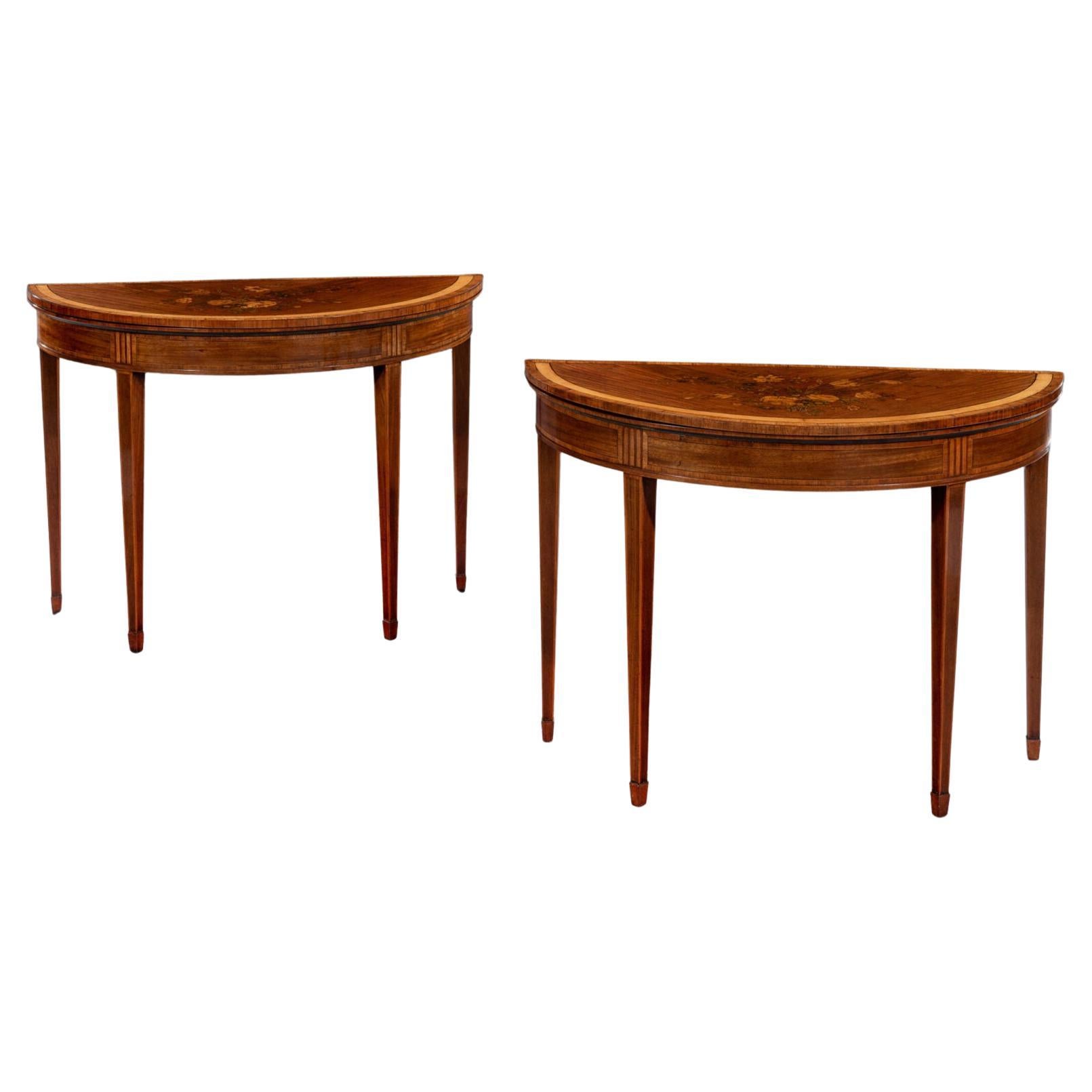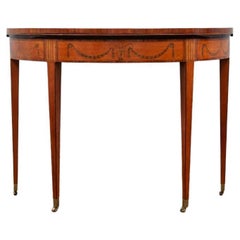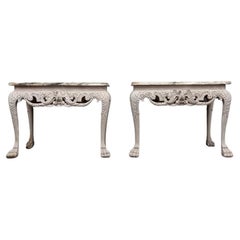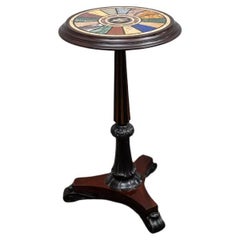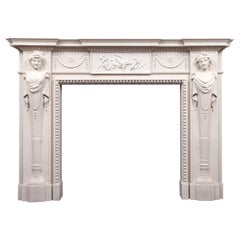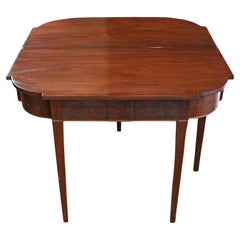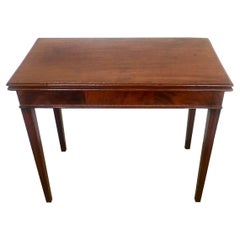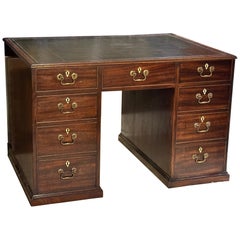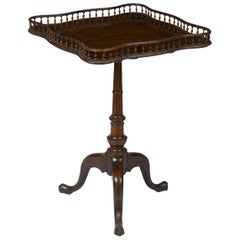Items Similar to Pair of George III Sheraton Period Inlaid Mahogany Tea Tables, circa 1800
Want more images or videos?
Request additional images or videos from the seller
1 of 5
Pair of George III Sheraton Period Inlaid Mahogany Tea Tables, circa 1800
About the Item
A pair of George III Sheraton period inlaid mahogany tea tables.
The tables are made from richly coloured mahogany with fine inlaid boxwood stringing.
The ‘D’ shaped hinged tops rest on twin gate supports with square tapering legs.
A great looking and practical pair of tables in excellent condition.
Circa 1800
Additional information:
Measurements:
Width: 36" (914mm)
Height: 29" (737mm)
Depth: 18" (457mm).
- Similar to:Thomas Sheraton (Cabinetmaker)
- Dimensions:Height: 29 in (73.66 cm)Width: 36 in (91.44 cm)Depth: 18 in (45.72 cm)
- Sold As:Set of 2
- Style:George III (Of the Period)
- Materials and Techniques:Boxwood,Inlay
- Place of Origin:England
- Period:Early 19th Century
- Date of Manufacture:circa 1800
- Condition:Wear consistent with age and use.
- Seller Location:Tyrone, GB
- Reference Number:Seller: AF1281stDibs: LU1082231536782
About the Seller
5.0
Vetted Professional Seller
Every seller passes strict standards for authenticity and reliability
Established in 2000
1stDibs seller since 2014
61 sales on 1stDibs
Typical response time: 4 hours
- ShippingRetrieving quote...Shipping from: Tyrone, United Kingdom
- Return Policy
Authenticity Guarantee
In the unlikely event there’s an issue with an item’s authenticity, contact us within 1 year for a full refund. DetailsMoney-Back Guarantee
If your item is not as described, is damaged in transit, or does not arrive, contact us within 7 days for a full refund. Details24-Hour Cancellation
You have a 24-hour grace period in which to reconsider your purchase, with no questions asked.Vetted Professional Sellers
Our world-class sellers must adhere to strict standards for service and quality, maintaining the integrity of our listings.Price-Match Guarantee
If you find that a seller listed the same item for a lower price elsewhere, we’ll match it.Trusted Global Delivery
Our best-in-class carrier network provides specialized shipping options worldwide, including custom delivery.More From This Seller
View AllGeorge III Inlaid Satinwood Demi-lune Games Table, circa 1790
Located in Tyrone, Northern Ireland
A George III inlaid Satinwood demi-lune games table, in the manner of William Moore.
Neo-classical in style, with particularly fine marquetry and parquetry inlays of exotic timbers....
Category
Antique 18th Century Irish George III Game Tables
Materials
Satinwood
Pair of 20th Century George II Style Painted Wooden Console Tables
Located in Tyrone, Northern Ireland
A pair of George II style painted wooden console tables with Italian Breccia marble tops.
The well carved foliate frieze with an eagle at the centre. The cabriole legs with lion p...
Category
20th Century English George II Console Tables
Materials
Wood
Antique dark wooden Occasional Inlaid Round Table with Specimen Marble Top
Located in Tyrone, Northern Ireland
An antique mahogany occasional table with specimen marble and micro mosaic top.
The partially ebonized mahogany base comprises of a fluted and gadrooned stem on a tri-form plinth base with raised acanthus-leaf feet.
The inset circular top has sections of semi-precious marbles/stones including Egyptian porphyry, Convent Sienna, Swedish Porphyry, Breccia Violeta and Lapis Lazuli. In the centre of the top is an extremely fine micro mosaic panel depicting the scene ‘Doves of Pliny...
Category
Antique Early 19th Century English Regency Tables
Materials
Oak, Mahogany
George III Style Portland Stone Mantelpiece
By Ryan & Smith Ltd.
Located in Tyrone, Northern Ireland
A superb neoclassical George III style Portland stone mantelpiece. The tall and full pilaster length terms with beautifully carved busts of Bacchus a...
Category
2010s Northern Irish George III Fireplaces and Mantels
Materials
Stone
Antique Marble Fireplace in the George III Neoclassical Style
Located in Tyrone, Northern Ireland
The carved urn centre tablet is flanked by frieze panels inlaid with black, Brocatelle and Sienna marbles, the inlay depicts chains of bell-flowers upheld by corner rings and centre ...
Category
Antique Late 19th Century English George III Fireplaces and Mantels
Materials
Siena Marble
French Régence Style dark wood and gilt Console Table, circa 1860
Located in Tyrone, Northern Ireland
French Régence Style dark wood and gilt Console Table, circa 1860
An antique French Régence style wooden table with gold gilded elements a...
Category
Antique 19th Century French Regency Console Tables
Materials
Pine
You May Also Like
Circa 1780 George III Period English Tea Table
Located in Chapel Hill, NC
Circa 1780 George III period tea table, English. Mahogany & flame mahogany veneer. Flip top with swing leg. Deal secondary wood. Satinwood & ebony apron line inlay. Large ovolo form ...
Category
Antique 1870s English George III Card Tables and Tea Tables
Materials
Wood
Antique George III Mahogany Inlaid Tea Table
Located in Suffolk, GB
Antique 18th century George III mahogany inlaid tea table having a quality mahogany lift up top crossbanded in satinwood which opens to reveal a polished figured mahogany inside cros...
Category
Antique 18th Century English George III Tables
Materials
Other
George III Period Mahogany Partner's Desk, circa 1800
Located in Lymington, GB
A fine George III-period mahogany partner’s desk, circa 1800.
This is a very good quality Georgian English partner’s desk of classic proportions.
Excellent deep, rich color and pati...
Category
Antique Early 1800s English George III Desks and Writing Tables
Materials
Mahogany
George III Mahogany Tilt-Top Tea Table
Located in Kittery Point, ME
The square serpentine tilt-top with a spindle gallery, above a tapering turned column raised on three cabriole legs terminating in pad feet.
Category
Antique Late 18th Century English George III Card Tables and Tea Tables
Materials
Mahogany
George III Mahogany Tilt Top Tea Table
Located in Essex, MA
With circular shaped spindled gallery raised on a turned urn form support and three cabriole legs with pad feet. Provenance; Devenish Antiques, NYC.
Category
Antique 1760s English George III Card Tables and Tea Tables
Materials
Other
Pair of George III Marquetry Inlaid Card Tables
By John Cobb
Located in Shipston-On-Stour, GB
A fine pair of 18th century George III Hepplewhite period floral marquetry inlaid demi-lune card tables attributed to John Cobb.
The semi-elliptical sabico and floral marquetry top is bordered and framed with a half moon of satin birch and box wood banding and crossbanded with an outer banding of tulipwood. The bouquet of flowers is most striking and displays some of the finest floral marquetry; the quality is exceptional and the detail and use of various exotic woods is exemplary.
The sabico frieze is shallow and crossbanded with tulipwood and flanked with inlaid satinwood flutes raised on crossbanded and tapered legs that stand on elegant block feet.
In excellent original condition and has achieved a warm and lightly sun kissed colour and patina to the premium grade figured mahogany.
Circa 1775 - 1785
John Cobb (c.1710–1778) was an English cabinetmaker and upholsterer. His work was once overshadowed by that of Thomas Chippendale but he is now regarded as being among England’s greatest furniture makers.
He is thought to come from Ashby, Norfolk and was the son of John Cobb and Mary Holmes.
It is believed that John Cobb was apprenticed in 1729 to Timothy Money (fl 1724–59), a Norwich upholsterer.
In 1755 he married Sukey, a daughter of the cabinetmaker Giles Grendey and is said to have acquired a ‘singularly haughty character’, strutting ‘in full dress of the most superb and costly kind...through his workshops giving orders to his men’, and on one occasion earning a rebuke from George III.
He worked with William Vile from 1750 until 1765 in premises at 72, the corner house of St Martin’s Lane and Long Acre. In the early 1750s, William Hallett, another cabinetmaker of the time, formed a working syndicate with Vile and Cobb. Vile and Cobb supplied furniture to the leading patrons of the day including George III and Queen Charlotte, the 1st Earl of Leicester at Holkham Hall, the 4th Duke of Devonshire at Chatsworth and the 4th Duke of Bedford at Woburn Abbey.
Vile and Cobb held the Royal Warrant from 1761 until April 1764 when Vile retired. While Vile created works in an Anglicised Rococo style, Cobb’s furniture of the 1770s was executed in an elegant Neoclassical style. Cobb was well known for his haughty disposition which did not always endear him to his customers, so it was no surprise that the Royal Warrant was awarded to two of their employees William France and John Bradburne instead of Cobb himself. Some of Cobb's work is in the Royal Collection at Buckingham Palace.
Following Vile's retirement in 1764, Cobb carried on in business with the assistance of his foreman, Samuel Reynolds (fl 1751–85). He made furniture to very high standards and earned a reputation for exquisite marquetry: Hester Thrale, the writer and friend of Dr Johnson, compared the inlaid floors at Sceaux, France, to ‘the most high prized Cabinet which Mr Cobb can produce to captivate the Eyes of his Customers’. Inlay in tropical woods, particularly satinwood, was an important element of Neo-classical furniture.
In 1772-4 Cobb produced an ‘Extra neat Inlaid Commode’ and two stands en suite for Paul Methuen at Corsham Court, Wilts, which survive in situ. In 1772 he was implicated in the smuggling of furniture from France. His most extensive work was for the 6th Earl of Coventry at Croome Court, Worcs, between 1765 and 1773. This included a large mahogany...
Category
Antique 1780s English George III Card Tables and Tea Tables
Materials
Mahogany, Satinwood, Sycamore, Tulipwood
